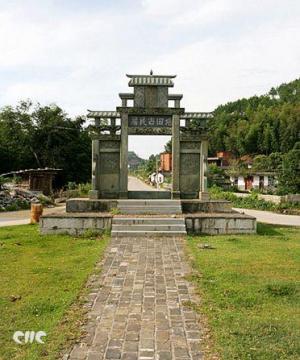1) Anhui ancient residence


培田古民居
1.
There are striking similarities in the layouts,architectual features and cultural connotations between Peitian ancient residence and Anhui ancient residence.
从建筑的结构格局、风格特色、文化意蕴上都可看出福建闽西培田古民居与徽派古民居有着极高的相似性。
2) ancient inhabitant


古代居民
1.
1 cemetery of Qiongkeke at Nilka County, Xinjiang, the paper points out that meat is the main component in the food structure of the ancient inhabitants in this cemetery while C3 plants account for a large portion in vegetable food.
本文对新疆尼勒克县穷科克一号墓地出土人骨中C、N同位素的比值进行了测定,结果显示,该墓地古代居民的饮食结构中以肉食类为主,植物类食物中以C类植物为主。
3) Ancient houses


古民居
1.
A study on the major characters of ancient houses in Huizhou area in terms of Folklore;


从民俗学角度看徽州古民居的主要特点
2.
The architecture of ancient houses of Huizhou has brought about a splendid perspective during the past several hundred years because of its unique geographical environment and economic surroundings.
徽州古民居建筑因其所处的独特的地理环境和经济环境及拥有的文化价值 ,至今仍熠熠生辉。
4) ancient dwelling


古民居
1.
Exploring the artistic characteristics of Peitian ancient dwellings;


探析培田古民居艺术特征
2.
The research on the tourism development of ancient dwelling during regional planning


区域性规划中对古民居旅游开发的研究
6) ancient living houses


古代民居
1.
The Hierarchical system for ancient living houses in China is a materialized form, in which the ruling class tried to establish its ideal and social order.
中国古代民居建筑等级制度,是统治阶级试图创设理想社会秩序的物化形式。
补充资料:培田古民居

培田古民居
培田民居是指位于福建省闽西山区连城县培田的明清古民居建筑群。
这是一座拥有800年历是的村落,是目前中国保存较为完整的明清时期客家古民居建筑群,堪与永定土楼、梅州围龙屋相媲美,是客家建筑文化经典之作。
培田村的古民居建筑群大体由6座学堂、两座书院、三庵、两庙、两碑坊等古代文化宗教建筑和20座古祠、30余幢民居,以及一条千米古街、5条巷道、两条贯穿村落的水圳组成。建筑用材为木料及砖。培田明清民居建筑群整体布局已具相当水准,宗祠、住屋、寺院、碑坊、街巷、水道、桥梁等村庄建筑之需考量周到,配置得体,壮观和谐。就各式建筑而言,其建筑功用、外观构造、装饰色彩,均是上乘之作。
说明:补充资料仅用于学习参考,请勿用于其它任何用途。